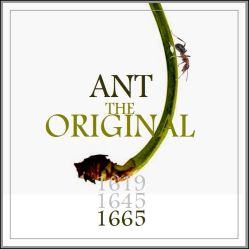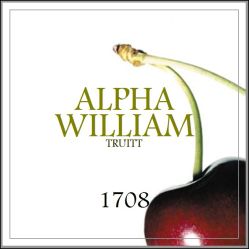HAPPY FAMILIES 1815
Bushrangers weren’t the only thing on James and Mary’s agenda that year. The family was under attack from within. By now the two boys had both grown into young men, both with a roving eye, already sowing as many wild oats as they could – which wasn’t many. Opportunities were limited. Men outnumbered women four to one. It was no surprise when it became apparent the lads were both looking close to home – and in the same direction.
The object of their attention was Miss Elizabeth Barnes, another of the transplanted Norfolk Island brats. She was fourteen and not very shy.
Not for her the demure years of early childhood. Lizzie went straight from child to woman with no stops in between. She simply had to enter the room for the boys to become gawky love-sick puppies, barely able to wipe the drool from their chins. They simply couldn’t help themselves. This was no blushing bride-to-be but a fully fledged, blood and bone colonial wench, proud of every inch of her body and absolutely aware of the impact it was having. She exuded an invisible smell that drove those randy lads crazy. They competed in the most pathetic of fashion for her attention, a clandestine ballet of love-sick men played out in a furtive series of encounters; they preened, fought and sighed, all for the love of this vulgar young currency lass, all for the warmth of her smile.
As soon as she came near the house Mary knew there would be trouble. She was only kind to her as a favor to John Barnes, her stepfather. Barnes and the child’s mother, Martha Edwards were living in Macquarie Plains but she had known them both for years. Lizzie moved in on the boys and proceeded to create chaos. She was a most pleasing lass, eager and attentive, even shy when appropriate. Out the back, in the shed, all bets were off. Our Miss Lizzie was a tigress.
FOR ALL ABOUT LIZZIE – CLICK HERE
Attack by bushranger was nothing compared to the warring of sibling brothers. It took just one milli-second for the lads to respond to Lizzie’s arrival. They were bouncing off the walls. The lads were no longer thinking with anything but their nether regions. All men are at their most tragic when impelled by Master Dick and these two gave new meaning to the subjugation. They huffed and they puffed, splaying out their feathers in the most base of courtship dances, drawn by forces utterly beyond their control to worship at the milky thighs of Lizzie Barnes. Filial competition reached new heights as the brothers battled it out over the lass; the rank evil of brother pitched against brother can only be imagined; years of payback, years of grief – the result was inevitable.
Lizzie looked like a woman but she was just a child. James was positively old at age twenty, a tall, strapping young man rapidly losing his composure when faced with Lizzie in full flight. She took him on with all guns blaring; they argued, fought and teased each other unmercifully in a mating dance of surprising ferocity. When she tired of James she sought solace in Thomas, whispering secrets into his eager ears that inflamed his passion even more. She led them both on in different ways, but the passion, the real attraction was for James. Poor Thomas was blind to the real agenda, thought his supporting role was the lead. He thought the war between Lizzie and James was a real one, not the mating dance before the consummation. He had no real experience of young woman, not woman like Lizzie anyway, she was a fully fledged original in his life and he couldn’t get enough. The air of secrecy, the hidden moments of intrigue, the threat of being caught only added to the excitement.
Events of 1815 swirled around them. Bushrangers, mayhem – they didn’t care.
James got the leg over sometime around the Ides of May – that much we know for sure. On the assumption that our lad didn’t hit the bullseye first time, it’s probably safe to assume they were at it for a while before. I’d suggest The Great Raid in March would be a pretty fine starting point. All the emotions released on that day, coupled with the parent’s absence in Hobart Town were more than enough fuel for a fourteen year-old girl and a nearly nineteen year-old Colonial boy.
It was September before they all found out she was pregnant. Mary rolled her eyes and mumbled about bad blood and buggery but the facts were staring them in the face. That blushing teenager was up the duff and was part of the family now, whether any of them liked it of not. With a shudder of practicality she set about planning the wedding and took the poor lass under her wing.
The real casualty was Tom. The first thing THOMAS TRIFFITT did when he heard was jump on his horse, ride over to the Scattergood’s farmhouse and propose to their daughter.
CLICK TO FIND ABOUT MARY SCATTERGOOD
Mary Scattergood was two years younger and, like everybody else, the issue of convict parents on Norfolk Island. No wonder Elizabeth Town became known as New Norfolk – it was. Her ‘adoptive’ father William had come out on the ‘Matilda’ with James Snr. He and Jane Gordon were married late the year before James and Mary, were certainly friends and acceptably ‘re-born’ settlers. The whole thing was probably a done-deal anyway.
Her little grey eyes lit up with enthusiasm and she leant over and kissed him with surprising fervor. Thomas accepted her embrace with sullen finality. The unhappy lout was dragged in to see Bill Scattergood and his wife within the hour and before he knew it the die was cast. Mary was welcomed into the family and her rather rapid wedding to Thomas on October 14th celebrated with gusto. Perhaps they thought he might change his mind.
When James and six-month pregnant Elizabeth Barnes were hitched on November 20th there was a great deal less enthusiasm. The young scrubber had blown the family apart.
*
Somehow, I came across this – it’s the original Wedding Register.
*
As you can see, next cab off the rank is Robert Hay and Maria Hopper. Robert is a witness to James’ wedding – along with John Fawkner. Robert Hay, Maria and their growing brood lived just three properties away – it’s from his land the bushrangers lurched to plunder Triffitt’s farm six months earlier. Quite why Fawkner is there eludes me.
Let’s look a little closer.
It’s a bit hard to read: The top line says: ‘Names’ and then ‘Free or Convict’ followed by ‘by which ship’ then ‘Age’. Both kids came free so ‘by what ship’ isn’t applicable. We see that James is twenty and Lizzie may or not be fifteen – or sixteen. She was neither – as she was born on 3rd May 1801 our gal was mid-fourteen.
On the left are four signatures, each in a different hand. One of them is written by someone else – I have no idea who, probably the Church Registrar – with a gap between the first and second name – and a little ‘her X mark’ sandwiched in around them. Lizzie Barnes couldn’t write – the closest we can get to her is this:
I find myself drawn to this sad scratch in the records.
There’s something about seeing their hand, their mark on the world, isn’t there? The wobbling cross that says ‘I am’. This pathetic ‘X’ says more about Lizzie Barnes than a bucket of my breathless prose. She’s fourteen, has probably never held a pen in her life – see how’s she’s grasped the pen and pulled down? The cross line was a lot more difficult after that. Think of it – a diagonal is a much more complex line to draw than an up and down line. The diagonal involves different spatial concepts – a whole other brain. Too hard for Lizzie. Her pen stops as her brain tries to coordinate hand and eye then, with an uncertain lurch she makes it over to the other side. Her mark is made. Phew.
Hay and Fawkner’s signatures are their own – confident, flowing, educated; above them is that of young James – note the difference. This is the first recorded signature of James Triffitt Jr. By the look of this adolescent hand, it’s clear he didn’t write very much. Look at the initials: the ‘J’ and the ‘T’ are much practised. Can’t you just see those two swirls decorating the cover of an exercise book? The double ‘FF’? The rest of the letters are substandand scrawl. This is a manufactured signature full of tics and artificial shudders, the work of a schoolboy hand.
Still, it’s a bloody miracle he could write at all.

*
It occurs to me that, right now, I’ve forgotten where this wedding took place. Some of this research took place some time ago – I’m old and stupid. For some reason, I think it’s at St. David’s in Hobart Town.
Which might be the reason for John Fawkner.
*
After all the excitement of 1815 things settled down a bit – there’s scarcely a peep till 1819. It’s not too hard to see why: children are falling from the skies. The family had no time to make the papers – they were busy making babies, a house, a home: JAMES JUNIOR sired Ann b. 25 Mar 1816 * James b. 12 Jul 1818 * John b. 3 Oct 1820.
THOMAS and Mary had a year of married life before their first, remarkable son appeared: WILLIAM Francis b. 27 Feb 1817 * Thomas b. 3 Nov 1818 * Mary b. 15 Aug 1820.
By the end of 1820, without doing a single thing, James and Mary already had six grandchildren. To all intents and purposes, the family is set.
Of course, just to piss me off, old James has another surprise in him – one last fling. If the randy old sod had just kept his dick in his pants we could all go home.
*
















